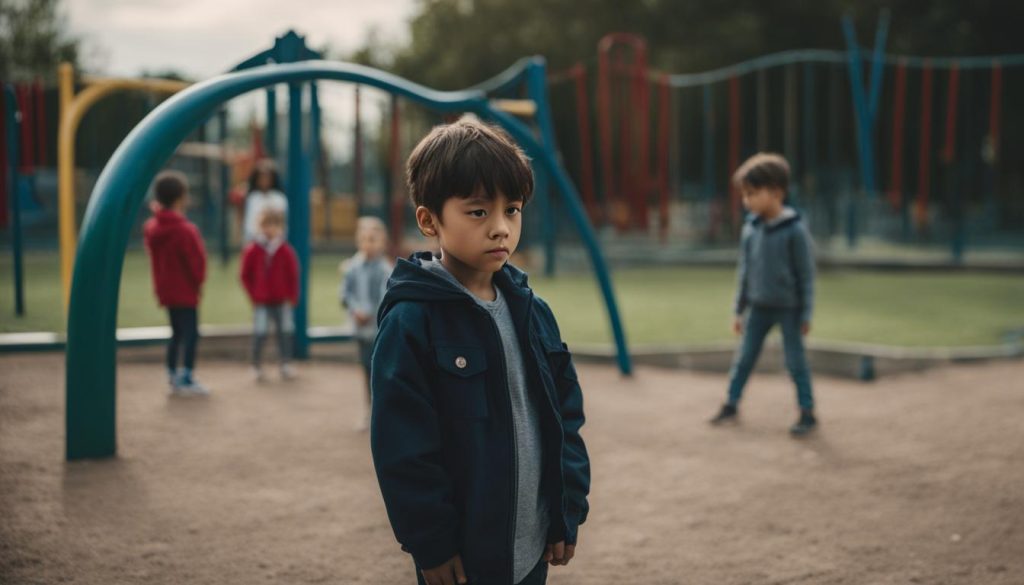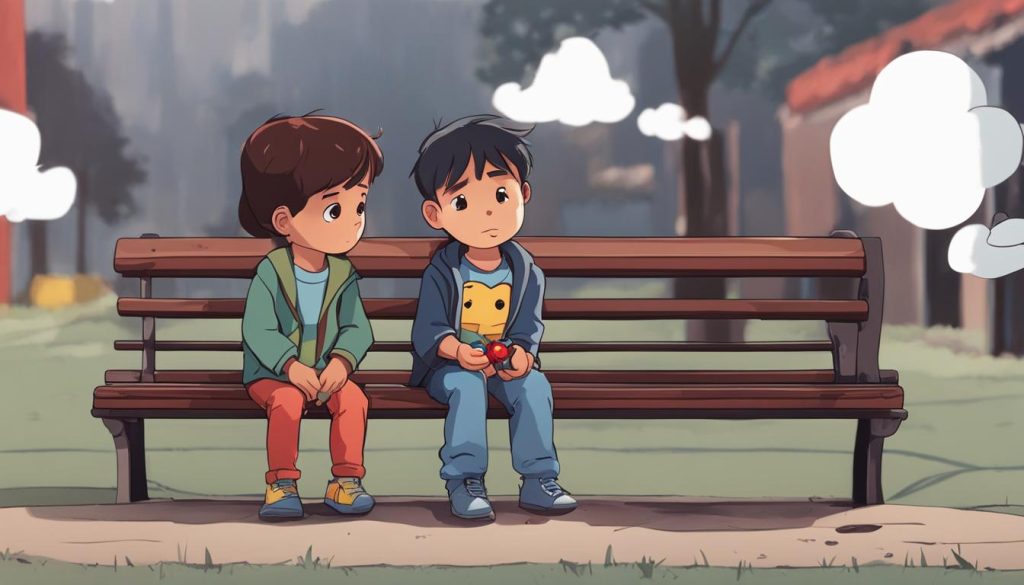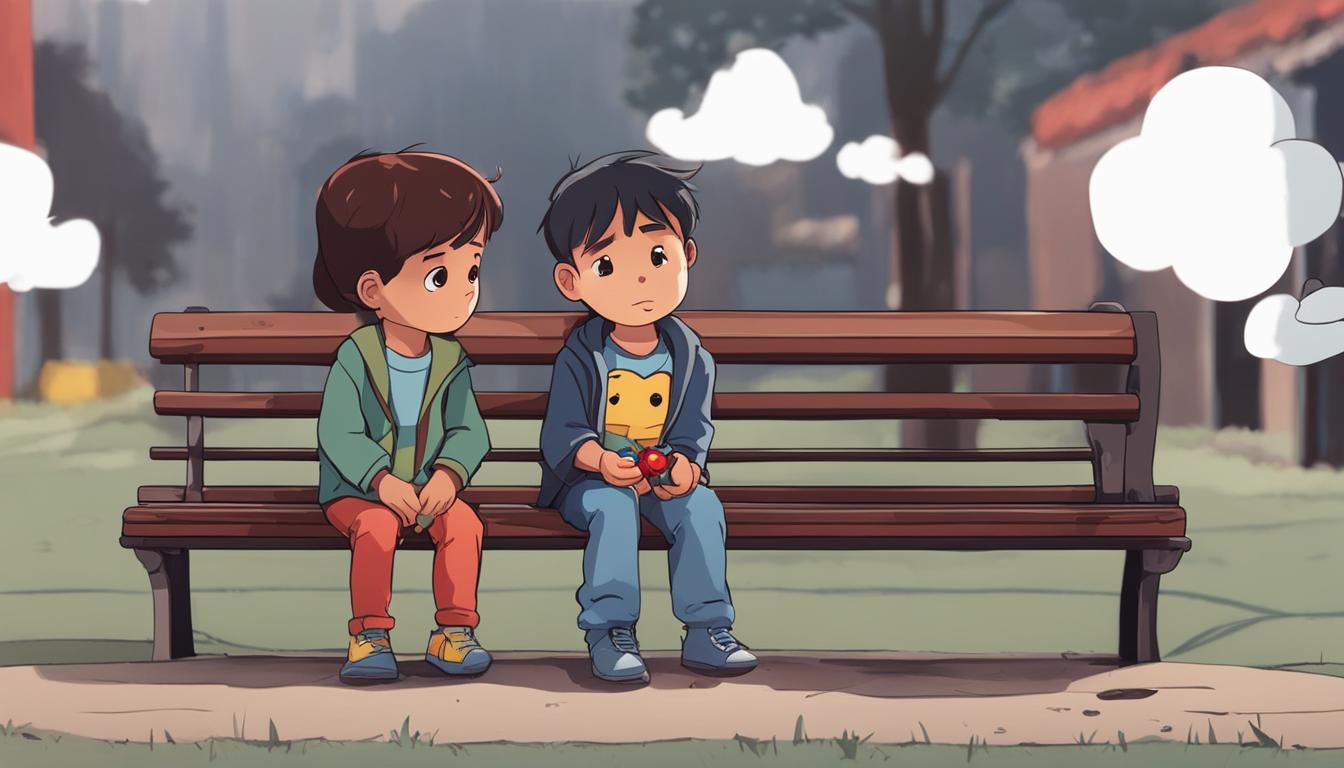Many parents wonder how to explain jealousy to a child. Jealousy is a normal emotion experienced by both adults and children.
However, young children often struggle to understand and cope with jealousy, which can lead to challenging behaviours.
By teaching children to recognise and manage their feelings of jealousy, we can help them develop important emotional skills and learn to navigate social situations more effectively.
Here, I will explore strategies and tips for explaining jealousy to a child in an age-appropriate and supportive way.

Points I Feel You Should Consider:
- Explaining jealousy can help kids develop emotional skills and navigate social situations more effectively.
- You can differentiate between jealousy and envy by understanding that jealousy involves protecting what is already yours, while envy involves wanting something you don’t have.
- Recognising signs of jealousy in children, such as challenging behaviours or feeling left out, is essential for providing support and guidance.
- Creating open communication and a safe space for children to express their emotions is crucial when discussing jealousy.
- Acknowledging and validating children’s feelings of jealousy helps them process and navigate their emotions more effectively.
The Nature of Jealousy and Envy
Jealousy and envy are natural human emotions that children may experience in various situations.
It’s important to differentiate between jealousy and envy. Jealousy typically involves protecting what is already yours, while envy involves wanting something you don’t have.
Children may feel jealous when they see their peers with possessions or abilities they desire or when a new sibling arrives.
Jealousy can manifest in challenging behaviours, tantrums, crying, or physical aggression. Parents and caregivers need to recognise these signs of jealousy in children and provide the necessary support and guidance to help them cope.
To better address jealousy in children, it’s crucial to understand the nature of these emotions.
By explaining the difference between jealousy and envy and helping children recognise their feelings, we can effectively teach them how to manage and navigate their emotions in a healthy way.

| Jealousy | Envy |
|---|---|
| Protecting what is already yours | Wanting something you don’t have |
| May arise when peers have possessions or abilities you desire | May occur when you see others with something you want |
| This can lead to challenging behaviours, tantrums, and aggression | It can create feelings of discontent and resentment |
Recognising Jealousy in Children
When it comes to helping children cope with jealousy, one of the first steps is recognising the signs of jealousy in them.
Jealousy can manifest in various ways, and parents and caregivers need to be attentive to these behaviours and emotions.
Some common signs of jealousy in children include challenging behaviours, tantrums, crying, or even physical aggression. However, jealousy can also be more subtle, with children exhibiting signs like complaining, copying others, or feeling left out.
Adults need to be observant and receptive to effectively support children in managing their feelings of jealousy.
By being aware of these signs, parents and caregivers can provide the necessary support and guidance to help children healthily navigate their jealousy.
Creating an environment where children feel comfortable expressing their emotions without judgment is essential, allowing for open communication and a deeper understanding of their experiences.
By recognising jealousy in children, we can take the first step towards helping them cope with their emotions.
Through observation, attentive communication, and a supportive environment, parents can offer the guidance and tools needed for children to navigate their jealousy positively and constructively.
| Signs of Jealousy in Children | How to Recognise |
|---|---|
| Tantrums and Challenging Behaviors | Look out for sudden outbursts of anger or frustration, particularly when the child perceives a threat to their sense of ownership or attention. |
| Crying and Emotional Distress | Notice if the child becomes upset or teary-eyed when they see someone else receiving attention, praise, or possessions that they desire. |
| Copying Others | If a child starts imitating the behaviours or possessions of another child, it could be a sign of envy and a desire for what the other child has. |
Creating Open Communication
When it comes to discussing jealousy with a child, open communication is key. By creating a safe and supportive environment, we can encourage children to express their emotions and thoughts freely.
This allows us to understand their perspective better and provide the guidance they need.
Explaining emotions to kids in a way they can grasp is essential during conversations about jealousy. Use simple and relatable examples to help them connect with the concept.
For instance, you could say, “Sometimes, when we see someone else getting something we want, it can make us feel unhappy or upset. We might feel like we’re missing out on something special.”
Listening actively is another crucial aspect of open communication. Please encourage your child to share their feelings and thoughts without judgment.
This can be achieved by maintaining eye contact, nodding, and responding empathetically. Let them know that their emotions are valid and that sometimes, feeling jealous is normal.
Fostering understanding through questions and active listening
As a parent or caregiver, ask open-ended questions to encourage dialogue and understanding.
For example, ask, “What made you feel jealous in that situation?” This prompts your child to reflect on their emotions and helps you gain insight into their perspective.
Additionally, active listening involves paraphrasing your child’s words and reflecting them back.
This demonstrates that you understand their feelings and helps them feel heard. For instance, you might say, “Seeing your friend with a new toy made you feel left out and jealous.”
Remember, open communication is a two-way street. It’s not just about talking to your child; it’s also about listening and understanding their experiences.
Creating an open dialogue can foster a deeper connection and help your child navigate their feelings of jealousy.

| Benefits of Open Communication: |
|---|
| 1. Encourages trust and honesty |
| 2. Enhances understanding of emotions |
| 3. Builds a stronger parent-child relationship |
| 4. Provides an opportunity for problem-solving |
| 5. Supports emotional growth and resilience |
By maintaining open communication, we can create a safe space for children to express their emotions and develop healthy coping mechanisms.
This empowers them to manage their feelings of jealousy and navigate social situations more effectively.
Acknowledging and Validating Feelings
When explaining jealousy to kids, it is essential to acknowledge and validate their feelings.
Children often struggle to understand and cope with jealousy, and it is important to let them know that their emotions are normal and understandable.
By empathising with their experiences and providing reassurance, we can help children feel understood and supported in managing their feelings of jealousy.
One way to acknowledge and validate their feelings is by actively listening. Letting children express their emotions without judgment allows them to feel heard and validated.
Use phrases like “I understand how you feel” or “It’s okay to feel jealous sometimes” to reassure them that their feelings are valid.
“It’s important to remember that jealousy is a natural emotion that everyone experiences at some point. It’s okay to feel jealous, but it’s how we react and manage our jealousy that matters.”
Additionally, using examples or stories from their own experiences or books can help children relate to and understand their feelings of jealousy.
This can further validate their emotions and provide a context for discussing strategies to manage jealousy in a child-friendly way.
| Benefits of Acknowledging and Validating Feelings | Strategies for Acknowledging and Validating Feelings |
|---|---|
|
|
Acknowledging and validating children’s feelings of jealousy is vital in helping them navigate and manage their emotions.
By creating a supportive environment where children feel understood, we can empower them to develop healthy coping strategies and build emotional resilience.
Teaching Coping Strategies
When addressing jealousy in children, teaching them effective coping strategies is essential.
By providing children with practical tools, we can help them manage their feelings healthily and constructively.
One strategy is deep breathing, which can help children calm down when feeling overwhelmed by jealousy.
Please encourage your child to take slow, deep breaths through their nose and out through their mouth. This simple technique can help them relax and gain control over their emotions.
Positive self-talk is another powerful coping strategy. Teach your child to recognise negative thoughts and replace them with positive affirmations.
For example, if your child feels jealous because a friend has a new toy, they can remind themselves, “I’m happy for my friend, and I have plenty of things that make me happy too.”
Redirecting attention is also helpful in managing jealousy. Please encourage your child to find alternative activities that can distract them from their feelings of envy.
This could involve engaging in a favourite hobby, playing with a beloved toy, or spending time with friends. By redirecting their focus, children can shift their attention away from what they don’t have and appreciate what they do.

Using Coping Strategies
Teaching coping strategies to children requires patience and consistency. Providing guidance and support is crucial as they learn to apply these techniques in real-life situations.
Please encourage your child to practice deep breathing and positive self-talk regularly, even when not feeling jealous. This will help them develop these strategies as habits and make them easier to utilise when jealousy arises.
Modelling coping strategies is also crucial. As a parent or caregiver, demonstrate your use of these techniques when you face challenges or experience jealousy. By showing your child how you cope with difficult emotions, you can inspire them to do the same.
Remember, addressing jealousy in children is a process. It takes time and effort to develop emotional resilience.
Encouraging Empathy and Perspective-Taking
Encouraging empathy and perspective-taking is crucial when explaining envy and jealousy to children. By helping children understand and consider different viewpoints, we can foster empathy and reduce feelings of jealousy or resentment.
One way to encourage empathy is by encouraging children to think about others’ experiences.
I often ask my child questions like, “How do you think your friend feels when they see someone else getting a toy they wanted?” This prompts my child to reflect on the emotions of others and develop a deeper understanding of why others may have what they desire.
Another effective strategy is to engage children in activities that promote perspective-taking.
For example, I sometimes ask my child to imagine being in someone else’s shoes and think about how they would feel in a similar situation. This exercise helps my child develop empathy and gain a broader perspective on their desires and the experiences of others.
“Empathy is about understanding another person’s feelings and experiences. By encouraging empathy in children, we can help them develop a greater appreciation for others and reduce feelings of jealousy or envy.”
Promoting Empathy Through Storytelling
Storytelling is a powerful tool for teaching children about empathy and perspective-taking. Reading books that explore different characters’ emotions and experiences can help children relate to others and learn valuable lessons.
For example, the story of a character who overcomes jealousy and learns to celebrate others’ successes can resonate with children and inspire them to adopt a more empathetic mindset.
Discussing the stories and characters with children also allows for meaningful conversations about jealousy and empathy. I often ask questions like, “Why do you think the character felt jealous?
How do you think they could have reacted differently?” These discussions further deepen my child’s understanding of jealousy and empathy, helping them develop the skills to manage their feelings and relate to others.
By encouraging empathy and perspective-taking, we equip children with the tools necessary to navigate feelings of jealousy and develop healthier relationships with others.
Whether through conversations, activities, or storytelling, fostering empathy is vital in helping children manage their emotions and cultivate compassion.
Using Books and Resources
Books and resources can be beneficial tools when discussing jealousy with kids. These resources provide age-appropriate explanations and engaging stories that children can relate to.
Reading books about jealousy and discussing the characters’ emotions and experiences can help children understand and process their feelings of jealousy. It also allows them to see that they’re not alone in experiencing these emotions.
Online resources and educational websites offer a wealth of information, strategies, and activities that parents can use to teach children about jealousy in a simple, relatable, and fun way.
One highly recommended book is “The Jealous Bee” by Sarah Adams. This beautifully illustrated story follows a bee named Benny, who becomes jealous when his friend receives extra attention.
As Benny navigates his feelings of jealousy, children can learn valuable lessons about recognising jealousy and finding positive ways to cope with it.
Another great resource is the online platform “Jealousy Explorers”, which features interactive games and exercises to help children understand and manage jealousy.
Parents can enhance children’s understanding and provide practical tools for dealing with these complex emotions by incorporating books and resources into discussions about jealousy.
Whether it’s curling up with a book or exploring online activities, these resources can make learning about jealousy a positive and empowering experience for children.
Recommended Books:
- “The Jealous Bee” by Sarah Adams
- “Dealing with Jealousy: A Book for Kids” by Jane Kolar
- “Understanding Jealousy: A Book for Children” by Molly Potter
Online Resources:
- “Jealousy Explorers” – An interactive platform with games and activities for children to explore and understand jealousy.
- “Jealousy Junction” – A website with articles, videos, and tips for parents and caregivers on addressing and supporting children dealing with jealousy.
- “Emotions Explained” – An online resource that provides child-friendly explanations and activities for various emotions, including jealousy.
| Book Title | Author | Summary |
|---|---|---|
| The Jealous Bee | Sarah Adams | In this beautifully illustrated story, a bee named Benny learns about jealousy and how to cope. |
| Dealing with Jealousy: A Book for Kids | Jane Kolar | This book explores jealousy and provides practical strategies for children to manage their feelings. |
| Understanding Jealousy: A Book for Children | Molly Potter | Through relatable examples, this book helps children understand jealousy and offers guidance for handling it. |
Modelling Healthy Emotional Responses
When it comes to helping kids understand and deal with jealousy, one of the most important things parents can do is to model healthy emotional responses.
Children learn by observing and imitating, so adults must set an example by managing their own emotions effectively and responding to jealousy in a positive and empathetic way.
Exploring jealousy with your child can be a valuable learning experience. By openly discussing feelings of jealousy and sharing personal stories, you can create a safe space for your child to express their emotions.
Please encourage them to discuss times when they’ve felt jealous and help them explore different perspectives. This can help them develop empathy and better understand why others may have what they desire.
Handling jealousy in kids also involves teaching them healthy coping mechanisms. Talk to your child about strategies they can use to manage their feelings, such as deep breathing or finding alternative activities to redirect their attention.
By empowering them with these tools, you can enable them to take control of their emotions and react more constructively and adaptively.
Final Thoughts
Understanding and helping children cope with jealousy is essential for their emotional development.
By providing age-appropriate explanations, open communication, and validation of their emotions, we can support children in addressing and managing their feelings of jealousy.
Furthermore, teaching children coping strategies and encouraging empathy and perspective-taking can empower them to navigate jealousy healthily and constructively.
Celebrating their uniqueness and individuality also reduces feelings of jealousy and fosters self-confidence.
Parents and caregivers must model healthy emotional responses to jealousy, as children learn by observing and imitating.
By creating an environment where jealousy is openly discussed and addressed, we can help children develop the skills to cope with jealousy throughout their lives.
FAQ
What is jealousy?
Jealousy is a natural human emotion that arises when individuals feel insecure or believe they are lacking something others have. It involves protecting what is already yours.
What is the difference between jealousy and envy?
Jealousy involves protecting what is already yours, while envy involves wanting something you don’t have.
How do children experience jealousy?
Children may experience jealousy and envy in various situations, such as the arrival of a new sibling or seeing their peers with possessions or abilities they desire.
How can I recognise signs of jealousy in children?
Jealousy can manifest in different ways, including challenging behaviors, tantrums, crying, or even physical aggression. Children may also exhibit subtle signs of jealousy, such as complaining, copying, or feeling left out.
How do I discuss jealousy with my child?
Create a safe and supportive environment where children feel comfortable expressing their emotions. Engage in age-appropriate conversations about jealousy to help children understand the causes and effects of jealousy.
How can I validate my child’s feelings of jealousy?
Acknowledge and validate your child’s feelings of jealousy. Let them know that their emotions are normal and understandable, providing reassurance and understanding.
How can I teach my child coping strategies for managing jealousy?
Teach your child techniques such as deep breathing, positive self-talk, and finding alternative activities to redirect their attention. These strategies empower children to take control of their emotions and react in a more constructive manner.
How can I help my child develop empathy and perspective-taking skills?
Encourage your child to think about others’ experiences and consider different perspectives. This helps them gain a better understanding of why others may have what they desire and develop empathy.
How can I foster a sense of uniqueness and individuality in my child?
Emphasise that everyone has different strengths, abilities, and interests. Celebrate your child’s unique qualities and help them cultivate their own talents, so they are less likely to compare themselves to others and feel jealous.
Are there any recommended books or resources for explaining jealousy to children?
Reading age-appropriate books about jealousy and discussing the characters’ emotions and experiences can help children relate and learn valuable lessons. Additionally, online resources and educational websites provide helpful strategies and activities for teaching children about jealousy in a child-friendly way.
How can I model healthy emotional responses to jealousy?
Manage your own emotions effectively and respond to jealousy in a positive and empathetic way. Children learn by observing, so demonstrating healthy coping mechanisms and conflict resolution strategies is essential.
How can I help my child understand and manage their feelings of jealousy?
By providing age-appropriate explanations, open communication, validation of emotions, coping strategies, and modeling healthy responses, parents and caregivers can support children in managing their jealousy and developing emotional resilience.

